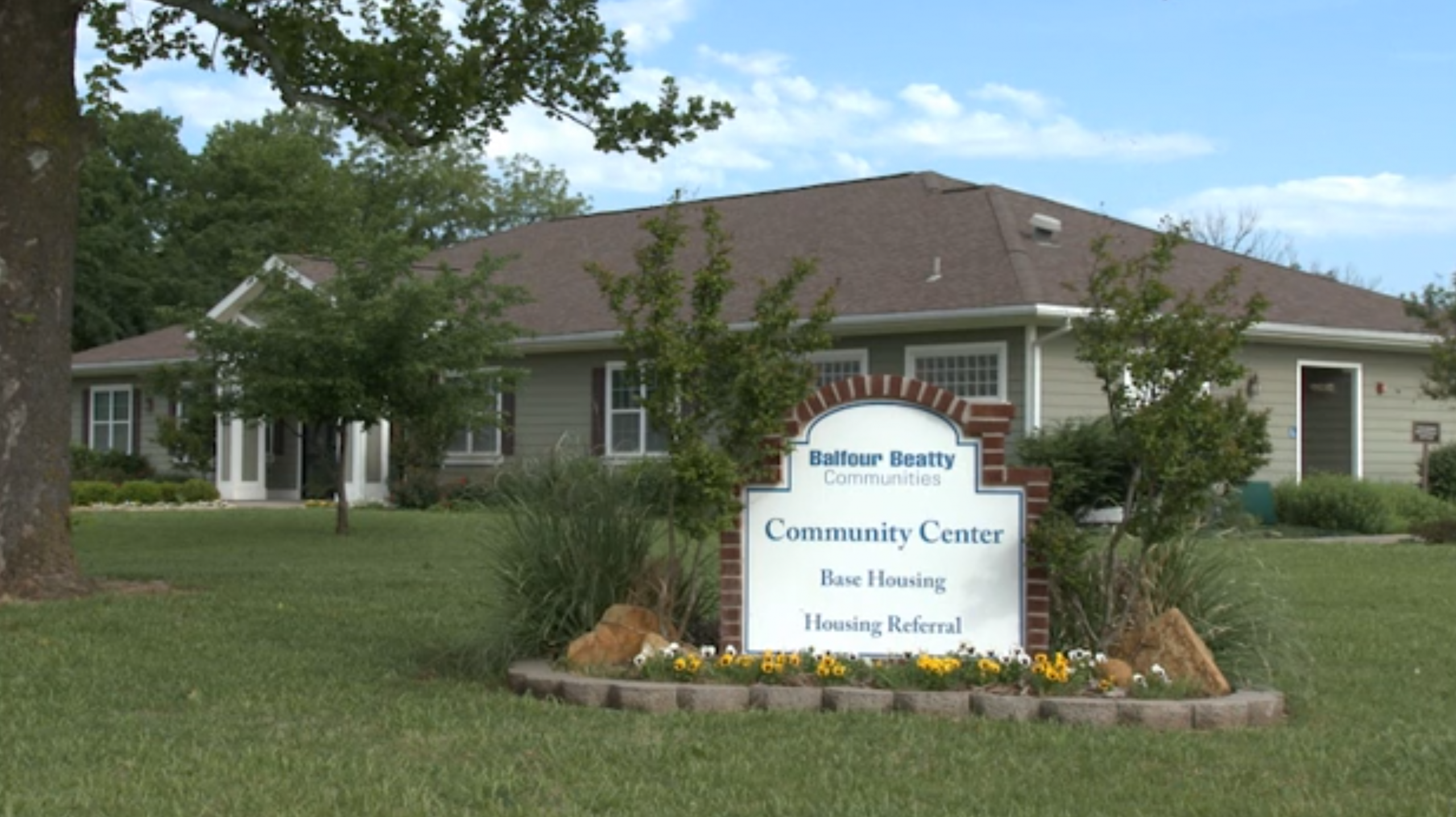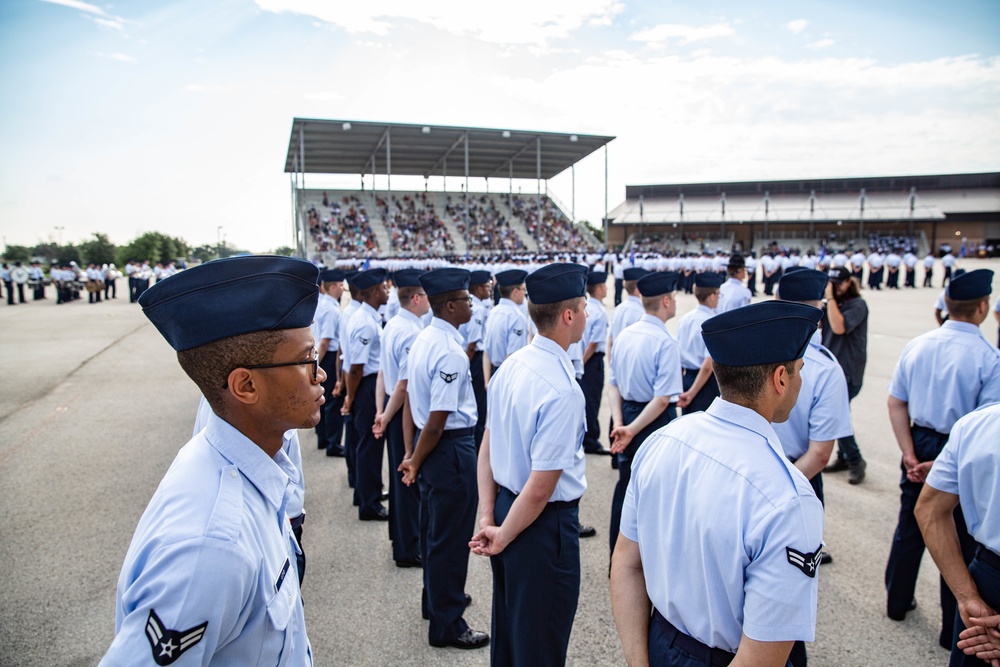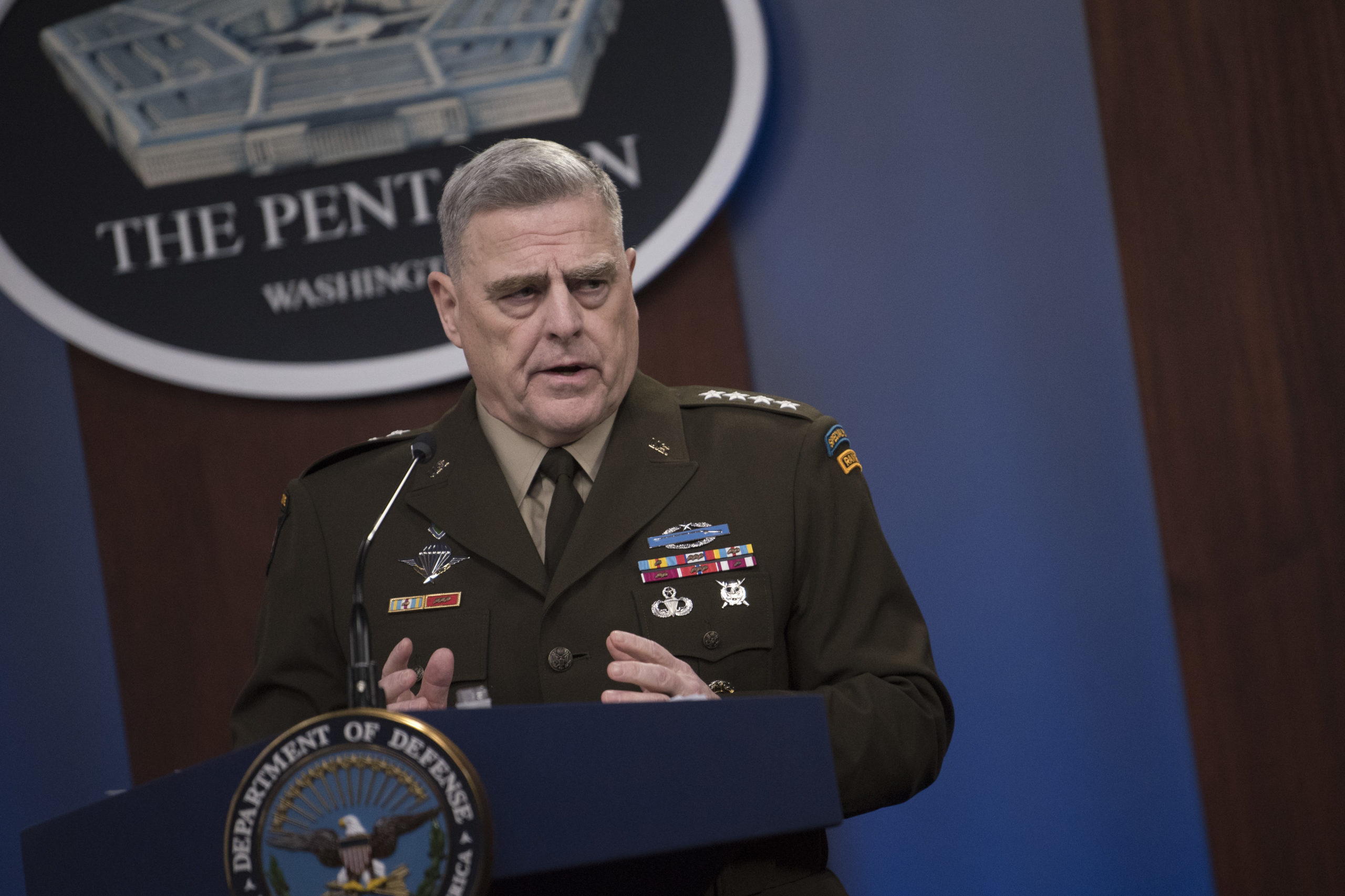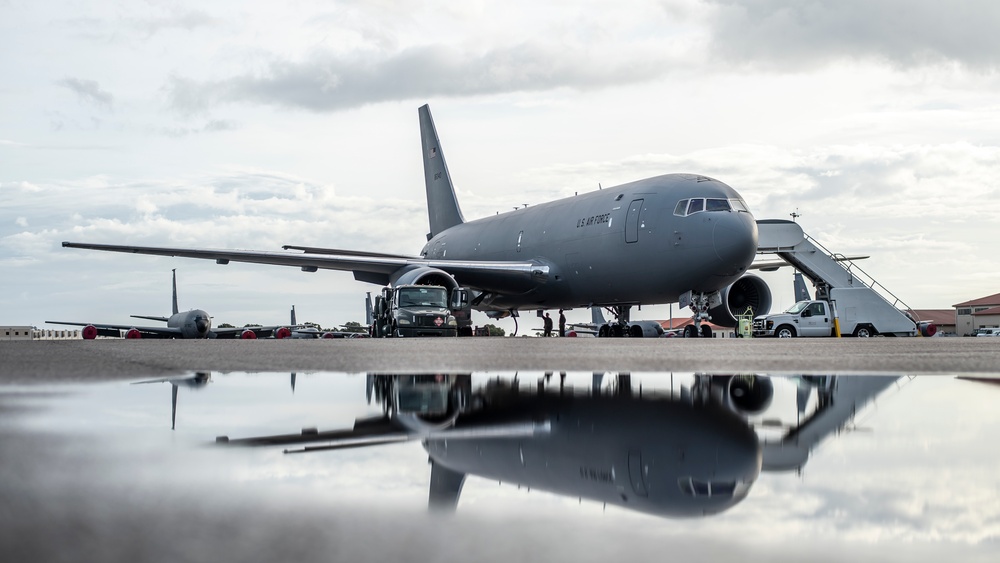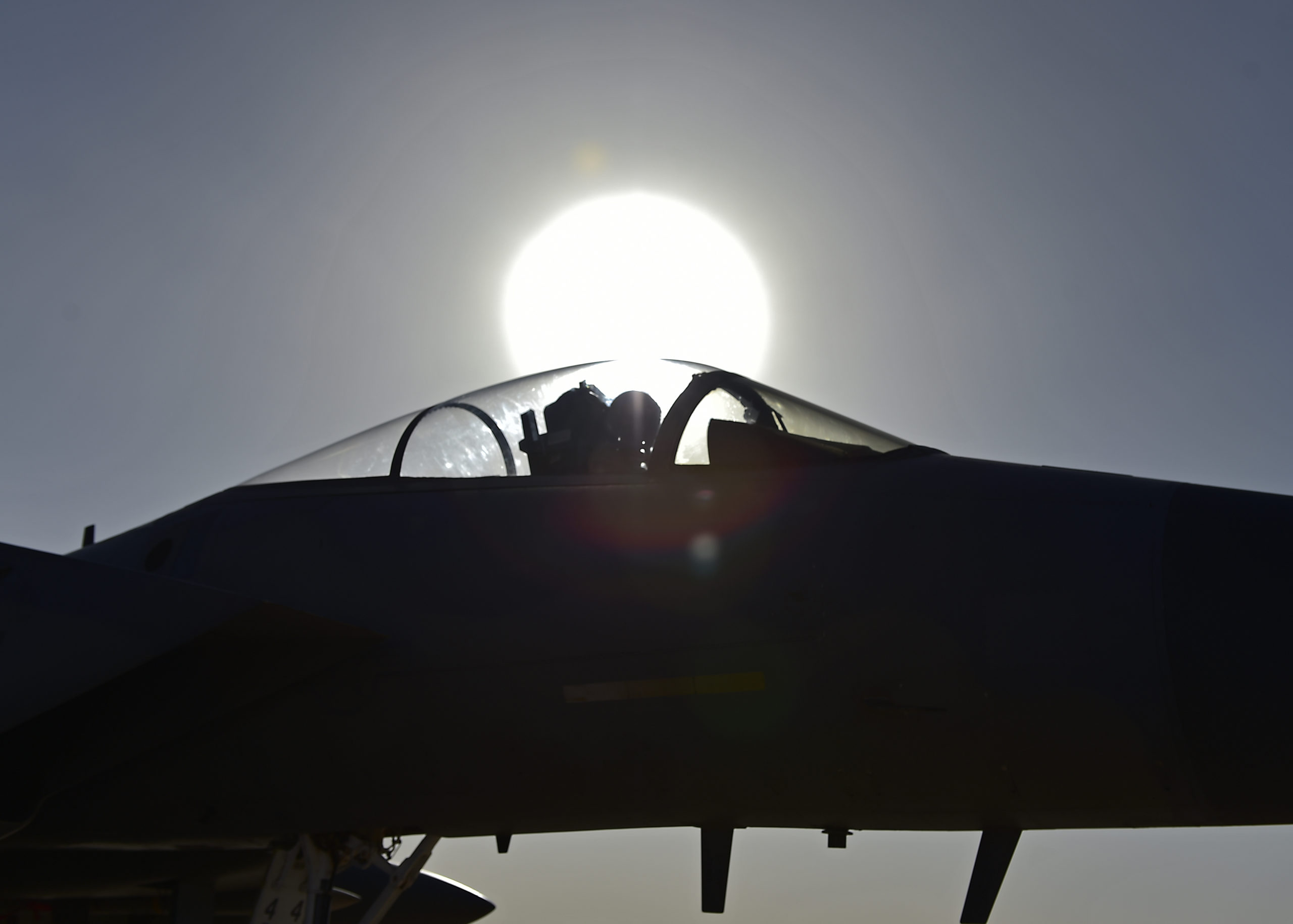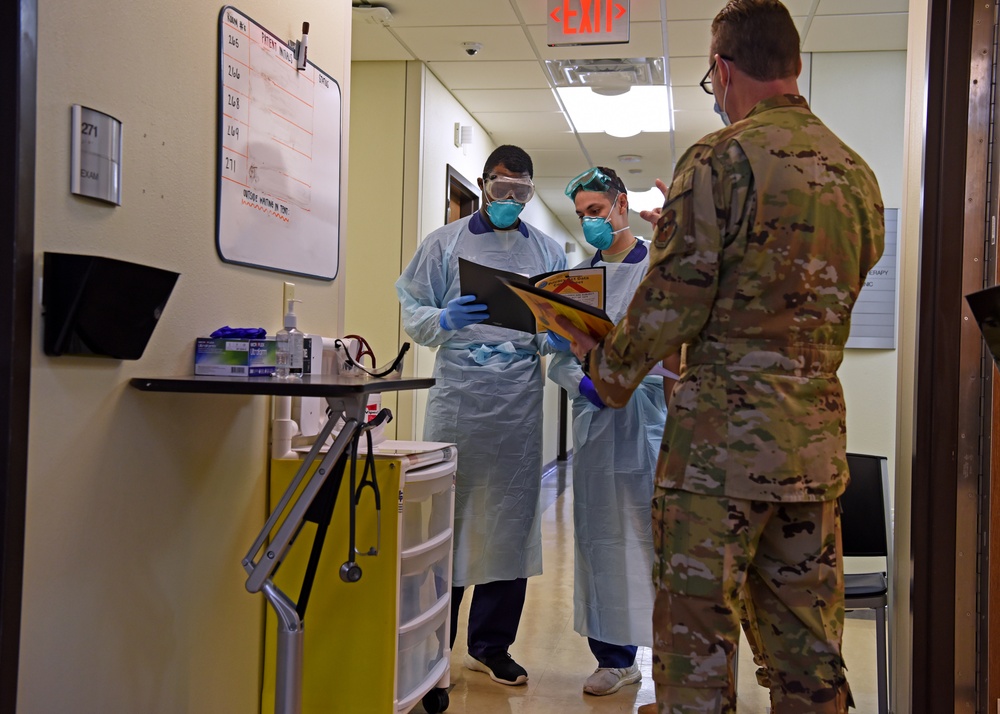A new year is poised to bring some key changes for Air Force and Space Force personnel as the services look to continue to combat the COVID-19 pandemic, transition to a new force generation model, roll out changes to their physical fitness programs, promote diversity, and more in 2022.
COVID-19
The past 12 months have seen huge developments in the COVID-19 pandemic that has loomed over the Air Force, the Pentagon, and the entire world for nearly two years.
Starting in the spring of 2021, vaccines became widely available, with troops helping to run mass vaccination sites across the nation. By late August, Defense Secretary Lloyd J. Austin III had announced that all service members would be required to get the vaccine.
The Air Force and Space Force were the first services to require Active-duty troops to be fully vaccinated, setting a deadline of Nov. 2, and the vast majority of the force—nearly 96 percent—complied.
Still, thousands of Airmen and Guardians did not get the shot. Some received medical or administrative exemptions, some applied for religious accommodations, and some simply refused.
Many of those unvaccinated enter 2022 with their future in the Air Force or Space Force uncertain. Thousands of Active-duty, Guard, and Reserve Airmen and Guardians are still seeking religious exemptions, but the Air Force had yet to grant a single one as of Dec. 22, with major commands and field commands denying more than 2,000 requests before Christmas.
The Air Force has also said those who are unvaccinated and don’t have an exemption will not be allowed to PCS to a new assignment, and Air Force Secretary Frank Kendall has raised the possibility that the unvaccinated will not be able to deploy.
The question now becomes just how many Airmen and Guardians the department will lose, either through separation, retirement, or discharge. If thousands wind up choosing either to leave or get booted, that could create a ripple effect on recruiting, retention, and, in the most extreme scenarios, readiness, depending on if separations are concentrated in certain units.
Even as the issue of the unvaccinated is expected to linger, another decision is coming up for the Pentagon—whether to require booster shots for troops. The FDA has granted emergency use authorization to booster shots from Moderna, Pfizer-BioNTech, and Johnson and Johnson, and health officials are urging the public to get the booster to combat a growing surge caused by the omicron variant.
DOD Press Secretary John F. Kirby has said the booster question is being considered at the highest levels of the Pentagon. Should leaders decide to require the booster, the process of deadlines, compliance, and discipline could play out again.
Another unknown is how the pandemic will continue to affect the housing market, which has created headaches for many service members trying to PCS over the past year or so. Spiking housing costs led the DAF to approve a temporary increase in basic allowance for housing rates, but that increase expired Dec. 31, 2021. The 2022 BAH rates represent a 5.1 percent increase on average, the largest jump in a decade, according to MilitaryBenefits.info.
Regardless of what happens with the pandemic, the nature of certain Air Force work environments has permanently changed—the commander of Air Force Materiel Command, Gen. Arnold W. Bunch Jr., acknowledged as much when he told reporters that AFMC would not return to a pre-COVID office model, instead wanting 50 percent of its workforce teleworking either permanently or on certain days.
For many Airmen, of course, teleworking isn’t feasible. But other office environments might look to follow AFMC’s lead.

NEW DEPLOYMENT MODEL
In an interview in August 2021, Air Force Chief of Staff Gen. Charles Q. Brown Jr. outlined a new force generation model for the service, based around a 24-month cycle divided into four six-month phases.
The four phases—Available to Commit, Reset, Prepare, and Ready—are aimed at standardizing the process for deployments across the Air Force, Brown said. Under previous force generation models, the service was often stretched thin with high demand and little downtime or readiness, especially after two decades of war in the Middle East.
The move to a new deployment model coincides with the Air Force’s increasing emphasis on agile combat employment, the concept of multi-capable Airmen deploying and operating in disparate locations as needed. To support ACE, Brown said, units need to have a standardized deployment process to be as interoperable as possible.
The goal for the new force generation model is to reach initial operational capability in fiscal 2023, which begins in October 2022. But the shift has already begun and will continue through 2022 as major commands such as Air Combat Command, Air Force Special Operations Command, Air Mobility Command, and Air Force Global Strike Command transition squadrons to the new cycle.
Of course, the new model will look different for the Space Force, as the fledgling service deploys Guardians in place, for missions that are nonstop. Exact details on what the Space Force will do, however, remain to be seen.
SPACE FORCE
The Space Force celebrated its second birthday to close out 2021, marking the end of a momentous 12 months as the service stood up two field commands—Space Systems Command and Space Training and Readiness Command—released its first ever human capital plan, and unveiled the insignia for its enlisted ranks. Oh, and it also debuted prototypes of its new service dress uniform.
As the Space Force enters its third year of existence, more changes for personnel are still to come. The service has said new physical fitness guidelines will be unveiled by early 2022, and leaders have hinted that those could look very different from the models used by the Air Force and other branches, focusing more on “holistic” health rather than testing.
USSF is also poised to become bigger and take on more missions in 2022, as Army and Navy assets are supposed to transfer over. That is complicated, however, by the current use of a continuing resolution to fund the government, keeping funding levels frozen at fiscal 2021 levels and preventing transfers and new starts.

The latest CR funds the government through Feb. 18. Before then, members of Congress will have to negotiate an appropriations bill to accompany the 2022 NDAA they passed in mid-December.
Assets aren’t the only thing being transferred. The Space Force selected 670 Active-duty service members and 259 civilians to join the new service in fiscal year 2022 and 2023 from the Army, Navy, and Marine Corps. USSF is also slated to add 521 enlisted Guardians and about 70 officers through recruitment.
NEW PT MODEL
While Guardians are still waiting for the Space Force to unveil its new PT guidelines, they will continue to follow the Air Force’s standards, and those are set to change in the new year.
The Air Force introduced a revamped physical fitness test that went into effect Jan. 1, 2022, with alternate exercises to the classic 1.5-mile run, pushups, and situps. Now, Airmen can choose between:
- A 1.5-mile run or a 20-meter high-aerobic multi-shuttle run (HAMR).
- One minute of pushups or two minutes of hand-release pushups.
- One minute of situps, two minutes of cross-leg reverse crunches, or a forearm plank held for as long as possible.
One option that’s not on the table is a 1-mile walk that was previously previewed by Air Force leadership. In a Facebook post, Chief Master Sgt. of the Air Force JoAnne S. Bass wrote that the walk was removed “until we are able to standardize the VO2 measurement equipment across every installation.”
The scoring charts for the new PT test, broken down by gender and five-year cohorts, are available here.

EQUITY EFFORTS
In 2021, the Air Force released reviews and reports showing that female Airmen and Airmen from racial and ethnic minorities often faced disparities in discipline, promotions, and opportunities in the military, as well as instances of interpersonal violence.
Air Force Undersecretary Gina Ortiz Jones has taken particular interest in this issue, pushing for the service to conduct further analysis of the disparities facing women of color in the Air Force. She and Kendall have framed the issue as a readiness problem—lower-level Airmen don’t always trust their leaders, which prevents them from serving to their full potential.
Kendall has also tied these reports to the ongoing issue of suicide, saying Airmen need to be able to go to their commanders if they are struggling and seek help.
A 2021 Pentagon report found that the total number of suicides across the services increased in 2021, but that the rate of suicides per 100,000 individuals did not increase by a statistically significant margin from 2019 to 2020, assuaging some fears that the COVID-19 pandemic would lead to a surge. Suspected suicides did decline through the first part of 2021.
Into 2022, the Air Force will continue to study the root causes of the disparities reported in the data and look for ways to address them. The service will also see an overhaul of the Uniform Code of Military Justice, as the 2022 NDAA removes the decision to prosecute certain crimes such as rape, sexual assault, murder, and kidnapping from the chain of command. The bill also changes the UCMJ to include sexual harassment as a punishable offense.
PROMOTIONS
Several major changes are coming for the Weighted Airman Promotion System in 2022. First, potential NCOs taking the Promotion Fitness Examination will no longer face 100 knowledge-based questions. Instead, they’ll have to answer 60 knowledge questions and 20 “situational judgment test” questions.
For the situational judgment questions, test-takers will “read the description of a situation relevant to their potential rank and duties, examine four possible responses to the situation, and then select the most effective and the least effective response,” according to an Air Force press release.
The Air Force is also changing how it evaluates Enlisted Promotion Reports. While up to three years of EPRs will still be considered, the service will no longer weight point totals based on the number of EPRs evaluated, a practice that leaders said sometimes unfairly disadvantaged more experienced Airmen.
Now, for their most recent EPR, Airmen will receive 250 points for a “Promote Now” recommendation, 220 points for “Must Promote,” and 200 points for “Promote.” And for Airmen with only one eligible EPR, that will be the extent of their score.
But Airmen with a second EPR can receive anywhere from 10 to 20 points based off the promotion recommendation they received in that review, and Airmen with a third EPR can add an additional five to 15 points.
The new system also eliminates any point value for the “Not Ready Now” recommendation and does away with the “Do Not Promote” recommendation entirely.

Tweaks are also being made to the DAF’s promotion boards. The Air Force and Space Force will have separate schedules, with the USSF considering promotions from sergeant to master sergeant in May, followed by major through colonel in October, and senior master sergeant and chief master sergeant in November. The Space Force is also shifting to selection boards for all noncommissioned officers.
The Air Force, meanwhile, will have its promotion boards for chaplain, colonel, and some lieutenant colonels meet several months earlier than they did in 2021, “moving the colonels’ promotion boards earlier in the year to better align with the colonel assignment process,” said Col. Scott Arcuri, Air Force Selection Board Secretariat chief.
The Air Force is also establishing a new board to consider candidates for lieutenant colonel in the cross functional operations developmental category—the new category is for Foreign Area Officers who now have their own Air Force Specialty Code.
DRESS AND APPEARANCE CHANGES
The Air Force significantly changed its grooming standards in 2021, allowing women to wear longer ponytails and braids, loosening restrictions on how far their hair is allowed to extend side-to-side, permitting men to grow their hair to 2.5 inches in bulk, and making it easier for men to obtain shaving waivers by letting medical officials authorize waivers instead of only commanding officers.
The service also made a few seemingly simple but major changes to its dress and appearance standards, allowing Airmen to put their hands in their pockets while standing as well as to use their phones or take a drink while walking.
On the uniform front, the Air Force unveiled new PT gear, which will be available later in 2022, followed by a four-year transition period.
For service dress, the Space Force will continue to solicit feedback on its prototype uniform, with the potential for wear testing starting in 2022. The Air Force, meanwhile, might have an issue with its service dress, as the Defense Logistics Agency recently announced it is expecting limited availability of uniform items starting in the third quarter of fiscal 2022, around April. Looking to proactively address a potential uniform shortage, the Air Force has already started issuing fewer uniform items to some BMT graduates.

